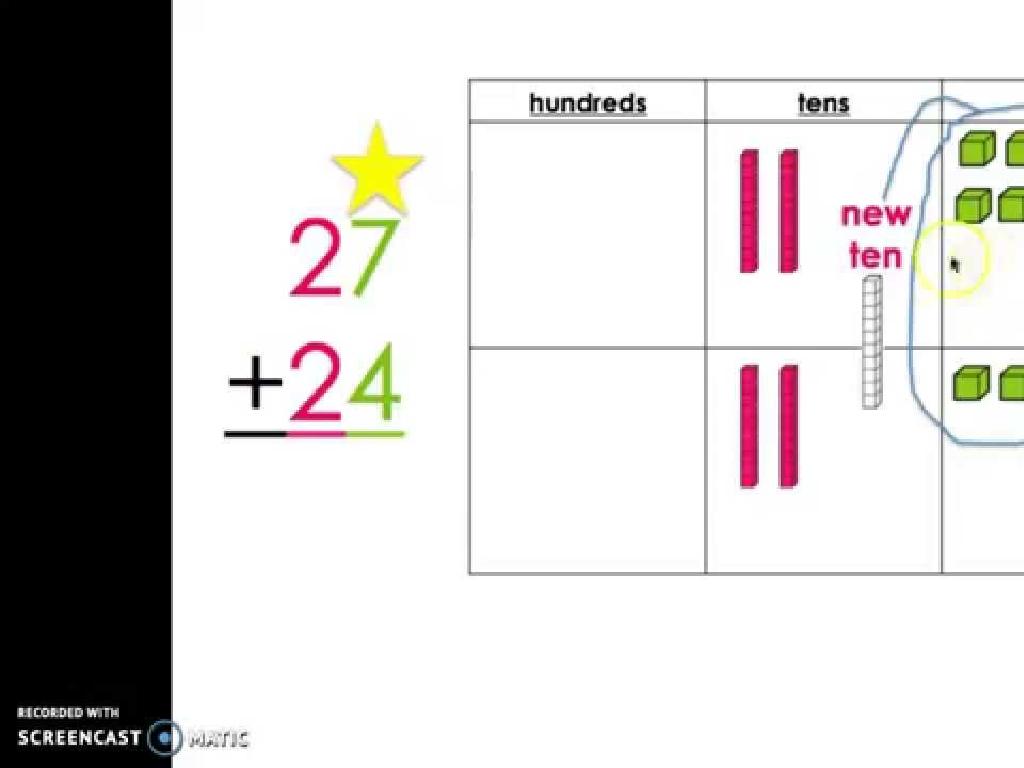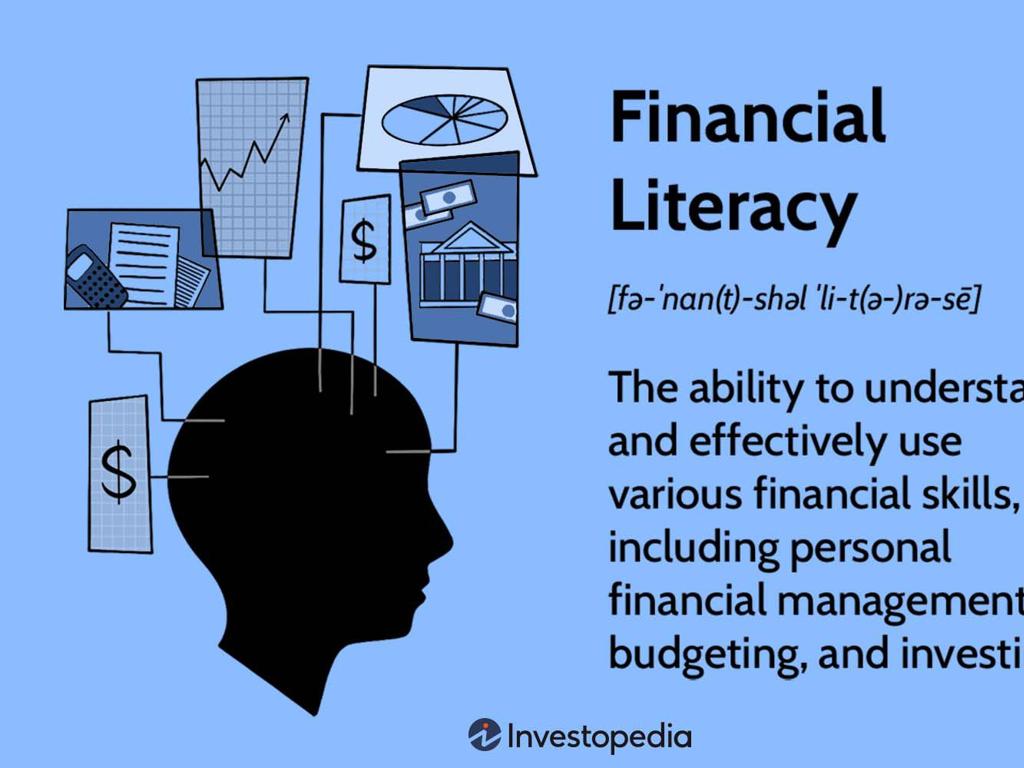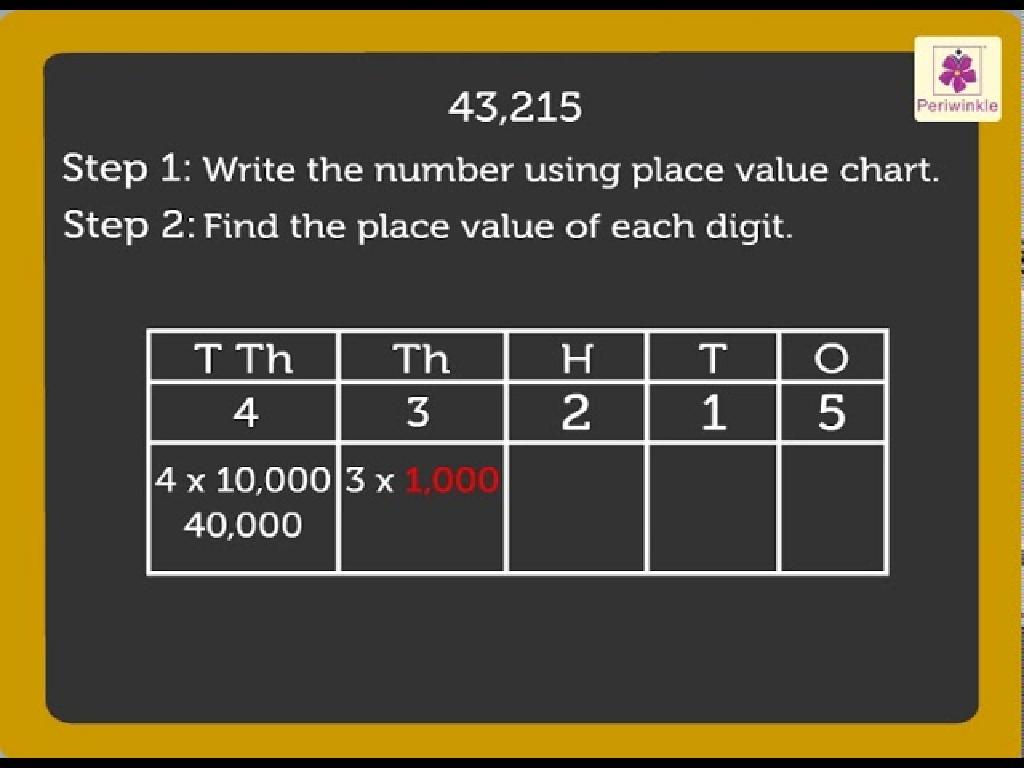Division Facts Up To 10: Sorting
Subject: Math
Grade: Third grade
Topic: Division Fluency Up To 10
Please LOG IN to download the presentation. Access is available to registered users only.
View More Content
Welcome to Division: Sharing Equally
– Division is like fair sharing
– Imagine splitting 10 apples evenly among friends
– Division facts up to 10
– Memorize simple division like 6 ÷ 2 = 3
– Division helps us in daily life
– Use division to split pizza slices or share toys
– Practice makes perfect in division
|
This slide introduces the concept of division as a form of fair sharing, which is a relatable and intuitive way for third graders to understand division. Emphasize that division facts up to 10 are basic math skills that they can memorize, similar to multiplication facts. Illustrate the importance of division in everyday life, such as dividing objects equally among a group, which makes it a super skill in math. Encourage students to practice division through various class activities and homework to become more confident in their division fluency. Provide examples and facilitate discussions on how they already use division in their daily lives without realizing it.
Understanding Division
– Division is sharing equally
– Imagine splitting 10 cookies with 2 friends equally
– It shows how many groups we can make
– If we have 12 apples, how many groups of 3 can we make?
– It tells us items per group
– With 15 candies, how many candies will each of 5 kids get?
– Division is fair sharing
|
This slide introduces the concept of division to third-grade students by relating it to the idea of sharing equally among friends. It’s important to use relatable examples, such as dividing cookies or candies, to illustrate how division works in real life. Explain that division can tell us either the number of groups we can make or the number of items in each group when we share things equally. Use manipulatives like counters or drawings to help students visualize the division process. Encourage students to think of their own examples of sharing items equally and discuss different scenarios where division is used.
Mastering Division Facts Up to 10
– Memorization speeds up problem-solving
– Explore division facts as a class
– We’ll review facts together and learn tricks to remember them
– Example: 10 ÷ 2 = 5
– Understanding that 10 divided by 2 means making 2 equal groups out of 10 items
– Practice makes perfect
– The more we practice, the quicker we’ll recall facts!
|
This slide is aimed at helping third graders understand the importance of memorizing division facts to enhance their problem-solving skills. Start by explaining how knowing division facts by heart can make math much easier and faster. Engage the class by reviewing division facts together, using interactive methods such as flashcards or games. Use concrete examples, like sharing 10 apples among 2 people, to illustrate the concept of division. Encourage students to practice regularly, as repetition will help them memorize these facts. Provide additional examples and practice problems for students to work on as homework or in class.
Sorting with Division
– Sorting objects explains division
– Sort by color, size, or type
– Equal groups show division
– For example, 12 objects into 3 groups gives 4 in each
– Division is grouping equally
– Think of division as making fair shares for everyone
|
This slide introduces the concept of division through the familiar activity of sorting objects. Students often understand sorting by various attributes such as color, size, or type. By connecting this to the idea of creating equal groups, we can illustrate division as a form of sorting. For instance, if we have 12 apples and we want to sort them into 3 equal groups, we would divide 12 by 3, resulting in 4 apples per group. This hands-on approach helps students visualize division as an act of fair sharing, making the abstract concept more concrete. Encourage students to practice with real objects, sorting them into equal groups and discussing the division facts that correspond with their sorting.
Let’s Practice Division!
– Understanding division
– Example: Sharing 9 toys
– If 9 toys are divided among 3 kids, how do we split them equally?
– Each kid gets 3 toys
– By dividing 9 by 3, we find that each kid gets 3 toys.
– Practice division problems
– Try solving similar problems to master division.
|
This slide is aimed at helping third-grade students understand the concept of division as sharing equally. Start with the example provided to show a practical scenario of division: 9 toys shared by 3 kids. Explain that division is the method we use to find out how many items each person gets when we share things equally. After going through the example, encourage the students to practice with similar division problems. Provide them with a set of problems involving division facts up to 10 and let them solve these problems either individually or in small groups. This will help reinforce their understanding of division and improve their fluency with division facts up to 10.
Division Games: Learning Can Be Fun!
– Games make division exciting
– Use dice, cards, or spinners
– Roll dice to create division problems
– Games reinforce division facts
– Solve problems faster with repeated play
– Practice with friends or family
– Share games to learn together
|
This slide is aimed at making division fun through interactive games. Introduce the concept that games can turn learning into an enjoyable activity. Explain how dice can be used to generate random numbers for division problems, cards can be drawn to set divisors and dividends, and spinners can add an element of chance to the game. Emphasize that through playing these games, students will be able to remember their division facts more easily. Encourage them to practice with friends or family members to make the learning process social and engaging. Provide examples of simple division games and suggest that students create their own. The goal is to build fluency in division facts up to 10 in a way that feels less like work and more like play.
Class Activity: Division Bingo
– Play Division Bingo as a class
– Solve division facts up to 10
– Practice division facts like 6 ÷ 2 or 9 ÷ 3
– Cover the answer on your Bingo card
– Aim for five in a row to win
|
Division Bingo is a fun and interactive way to help students practice and reinforce their understanding of division facts up to 10. Each student will receive a Bingo card with answers to division facts. As the teacher calls out division problems, students will solve them and cover the corresponding answers on their cards. The first student to cover five answers in a row horizontally, vertically, or diagonally wins the game. Prepare multiple Bingo cards with randomized answers to ensure variety. Encourage students to double-check their division facts before covering an answer. This activity promotes quick recall of division facts and provides a competitive element to engage students.
Wrapping Up: Division Facts Mastery
– Excellent work on division facts!
– Practice with Division Bingo
– Use your Division Bingo sheet to review
– More division discoveries next class
– Get ready for exciting new challenges
– Keep practicing at home!
|
Today’s class focused on mastering division facts up to 10, and the students did a great job. Encourage them to continue practicing at home using the Division Bingo game to reinforce their skills. This engaging activity not only helps with memorization but also makes learning fun. For the next class, prepare to introduce more complex division concepts and ensure to create an environment that fosters curiosity and excitement for learning more about division. Homework like this is crucial for retention, so remind students to spend some time on it. Acknowledge their hard work today and motivate them for the upcoming lessons.





